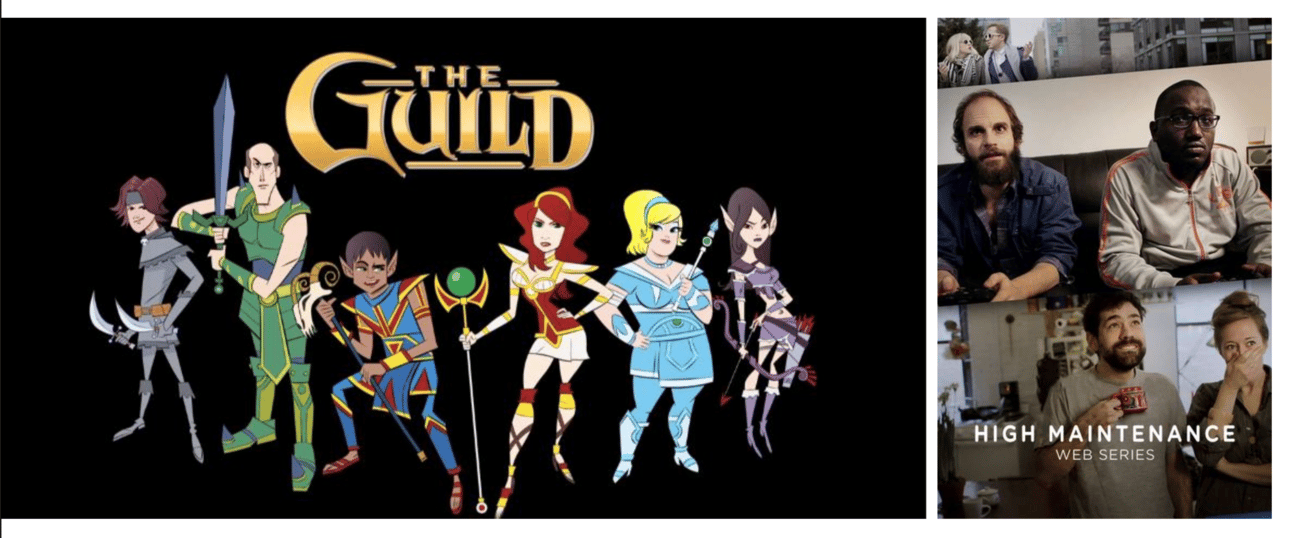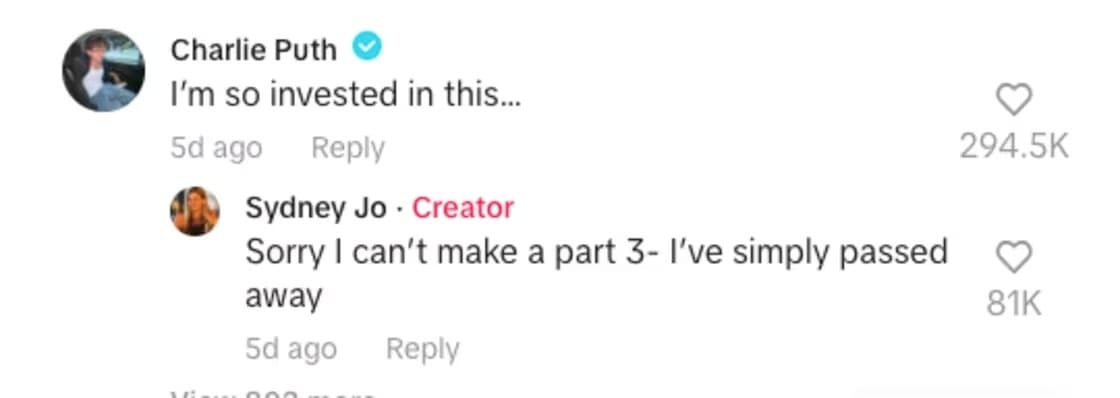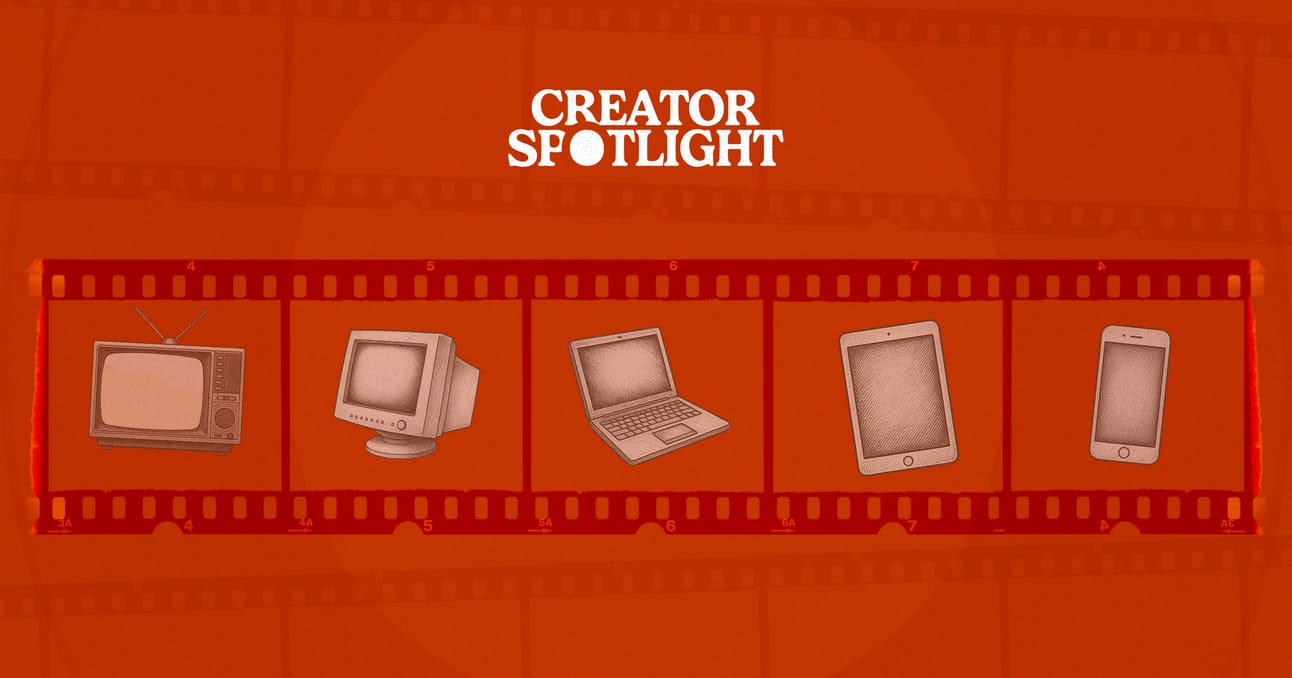
Your guide to growing and monetizing creator-first businesses.
Brought to you by beehiiv.
The most successful creators recognize that when a piece of content goes viral, it becomes a pilot episode.
As platforms like TikTok lean further into serialized dramedies, this is the new creator playbook. More creators are operating like digital showrunners, leveraging lo-fi skits and unscripted moments into serialized franchises. They're writing, directing, and editing multi-character universes from their phones — often alone — and building loyal audiences who return for every episode.
From Reesa Teesa’s 52-part saga, Who TF Did I Marry?, recorded entirely in her car, to Sydney Jo’s The Group Chat, a faux-reality series filmed in an apartment, some of the best new shows on the vertical screen aren’t getting pitched — they’re being posted, serialized, and monetized. And I haven’t been able to put my phone down.
In this issue:
📱How TikTok is powering serialized web dramas
📈 Turning one viral post into a scalable storytelling format
💰Leveraging and monetizing the serialized storytelling blueprint
— Natalia Pérez-González, Assistant Editor

This creator replaced his corporate salary in 6 months (Creator Spotlight)
16 brand accounts to follow for inspiration (Link In Bio)
How to create one month’s worth of content in two hours (Instagram)

The hottest show on TikTok
The most popular new dramedy isn’t on any streaming app — it’s unfolding, scene by scene, in a TikTok creator’s apartment. On any given day, during a lunch break, I’m watching Season 2 of Sydney Jo’s (@thatgirlsydjo) The Group Chat — a TikTok series written, produced, and edited entirely by Sydney.
When she debuted Season 1, we were introduced to a set of roommates whose group chat starts blowing up over a classic modern dilemma: one of the girls invited her boyfriend to that night’s dinner reservation. Passive-aggressive remarks and verbal sparring ensued between the group chat’s members, all played by Sydney herself.
@thatgirlsydjo The Group Chat: a series #groupchat #friends #drama #tea
The internet was hooked. Within a week, that first video had over 30 million views, nearly 4 million likes, and over 20,000 comments. Sydney’s TikTok audience, which had stalled around 260,000 followers before her series launch, catapulted to 1 million within days. Celebrities were locked in, too. Charlie Puth, Hailey Bieber, Leslie Jones, Bethenny Frankel, and even the Indiana Pacers all weighed in on the plot’s twists and turns.
“She’s done more in one week than most streaming services have done in years,“ one user commented.
And she didn’t waste the momentum. Sydney’s sudden virality led to even bigger opportunities — landing a partnership with Netflix to promote the final season of YOU, which she cleverly integrated into The Group Chat storyline. A TODAY show segment soon followed, which she also spun into content that felt like an extension of the show’s world.
Both showcase her creator-business savvy. Sydney’s not just making content — she’s building a franchise.
The mundanity of her dramedy is what makes it such a hit. The series’ concept and production are simple, and its character-driven execution is thoughtful, humorous, and relatable. It’s all filmed from Sydney’s phone in her apartment, rooted entirely in the aesthetics of TikTok, and I need at least three more seasons of it. Multiple episodes ended in cliffhangers, with fans in the comments posting endlessly about what they think will happen next. For weeks, I couldn’t scroll through my FYP without landing on several reactions, commentary, and fan theory videos in response to the twists and turns of The Group Chat.
“I don’t think I’ll ever watch real TV again,” another user posted.
It’s the type of content that makes me nostalgic for the scrappiness of an old web drama; in fact, the recipe for what makes these bite-sized stories so appealing to me is similar to that of 2000s web telenovelas. Popular ones like Marimar, which I binged with my mother on YouTube for an entire semester in 4th grade, allowed us to interact, in real time, with other fan reactions to the plot — gaining an instant community with others who were equally invested.

An evolution of the web series
Before TikTok sagas and Instagram dramas, we had standout web series pioneers — The Guild, Broad City (pre-Comedy Central), High Maintenance, and The Misadventures of an Awkward Black Girl, to name a few.

Creators uploaded to YouTube, Vimeo, or their own websites, armed with a camera, some friends as cast members, editing software, and a dream.
And in a pre-TikTok algorithm era, distribution for low-budget production relied on good old internet fanfare: shares on Tumblr or embeds in blog posts, Reddit threads, and newsletters. Success was slower and hard-fought.
There was an aspirational arc behind much of this work, too. Creators were trying to prove that they could write, act, and direct. That they deserved a seat at the table. And in many cases, they got it. Issa Rae’s Awkward Black Girl became a five-season hit as HBO’s Insecure. Broad City went from a two-woman hustle to a Comedy Central hit. For many, a web series was a calling card, a proof of concept, and a stepping stone to the big screen.
Today's model looks a bit different. The goal for creators isn't necessarily to graduate from digital to traditional media — it's to build a sustainable business within the digital ecosystem itself. Creators like Sydney aren't using TikTok as a portfolio piece for Hollywood; they're treating it as their primary stage.
The barrier to entry is low, the distribution is built in, and the production tools are free. The comment section becomes a writers’ room — true audience participation in real-time story development. Fans pitch plot twists, cast new characters, and sometimes even cast themselves in the plot.

Charlie Puth ended up voicing the role of Justin, the aforementioned boyfriend, in the season’s finale.
Ultimately, short-form serialized content unlocks more than just heightened engagement — it builds storytelling infrastructure. It’s a chance for more creators to see their work as a business and think like producers. That’s how creators move from making content to building businesses.

New media, new infrastructure
As more creators become showrunners, an ecosystem of short-form production companies has begun to formalize around them, not to replace the creator-led model, but to help sustain it.
Adam Faze, co-founder of the short-form production company Gymnasium, left the studio system after 8 years (2021) in traditional Hollywood. When he first set out to launch the company, originally named FazeWorld, he raised a $750,000 seed round at a $7.5 million valuation from a slew of big names in media, all of whom bought into his company's mission: “Make TV for the screen you actually watch.”
Adam’s strategy is simple and effective: create highly produced shows on digital platforms with TV-level structure on a digital-first budget. His hit series, Keep the Meter Running, Buying Time, and Einstein Elementary, are appointment TV built for the next generation’s feed — and for the algorithm.
Penn Weinberger, former Creator Spotlight guest and founder of Bad Behavior, has carved out a niche for his agency at the intersection of strategy and execution. Bad Behavior works with brands to build bespoke, performant short-form video — from one-off campaigns to full-channel management. Brands are the primary client, and creators are talent.

From creator to showrunner
For creators producing limited series or short-form narrative arcs for the vertical screen, the shift to serialized storytelling isn’t just a creative decision — it’s strategic. It fundamentally transforms how creators approach the three functions in our creator economy: how creators create, grow, and sell.
Creating becomes showrunning
Serialized content turns creators into multi-hyphenates. Instead of chasing standalone hits optimized for instant engagement, creators must now think like showrunners: developing character arcs, mapping out plotlines, and sustaining narrative tension across multiple short episodes.
The storytelling stakes are higher, and so is the pre-production lift. Many successful serialized creators batch film episodes in advance, balancing speed with structure. Like Sydney, they’re their own writers, directors, editors, and stars — all while maintaining the intimate, platform-native feel that makes the content resonate.
Growing becomes community-building
Unlike standalone content, which can peak and fade quickly, serialized stories build and sustain momentum. Platforms like TikTok and YouTube reward this format by surfacing follow-up episodes to viewers who engaged with earlier ones, turning each post into a gateway for discovery and creating a bingeable “back catalog.”
Comment sections become community hubs, full of speculation, rewatches, and emotional investment, which allows for real-time feedback loops. The metric of success shifts from one-off views to completion rates, return visits, and retention across episodes.
Selling multiplies exponentially
Each episode is another revenue opportunity. Whether through ad share, paid subscriptions, or sponsored integration, a well-told series has longevity and depth that single posts often lack.
Unlike traditional sponsored content, serialized content offers opportunities for contextual placement: a brand can be woven directly into a storyline or become part of a character’s world, increasing both authenticity and impact.
@thatgirlsydjo We interrupt this group chat for a much needed @Domino’s commercial break.... be right back in the chat with the girlies shortly #ad
Additional monetization opportunities include:
Licensing or adapting successful series for longer-form or traditional media
Brand-backed extensions (e.g., bonus episodes, themed arcs)
Crossovers with other creator series to expand audience reach
Subscription incentives, like early access or behind-the-scenes content

The blueprint is already there
Serialized content, across any platform, is just repetition with intention. The most compelling, performant series often begin with an initial story that stuck; a post that resonated and took off; a character people fell in love with; a universal arc that made people laugh.
There’s never been more data by which to inform your experiments, and serialized content on socials offers an endless loop of feedback. Platforms offer real-time stats, and your audience tells you what’s working (and what’s not). However, the speed of iteration is key — from concept to sequel — to make this a viable, efficient path to growth, retention, and monetization.
If you’re producing serialized content in any medium, the same logic applies: take what resonated and keep building. And if your first post takes off, congratulations! You’ve got a pilot.

What are your thoughts on this essay? Is there anything you would add? Do you relate to or disagree with a point? Let’s discuss in the comments.
1.5 million full-time creators

When the Interactive Advertising Bureau (IAB) published its digital economy report in 2020, there were only 200,000 full-time creators. Their latest report, released last month, found that the industry has grown 7.5x since then. There are 1.5 million full-time creators in the U.S. today.
And more than 400,000 of them read Creator Spotlight.
Newsletter operators netting upwards of $1,000,000 in revenue each year. YouTube strategists behind the platform’s most performant content. Executives and founders building the tools and infrastructure powering it all.
Spotlight readers are the future of the creator economy. Get your message in front of them; partner with us.



